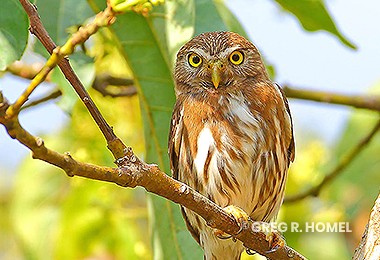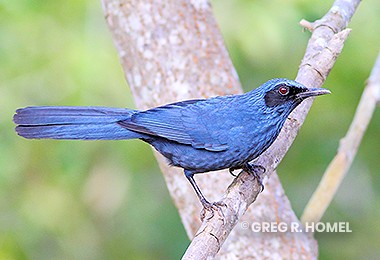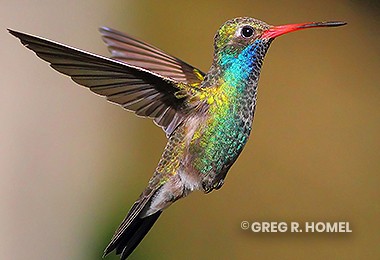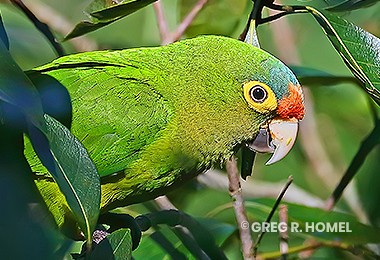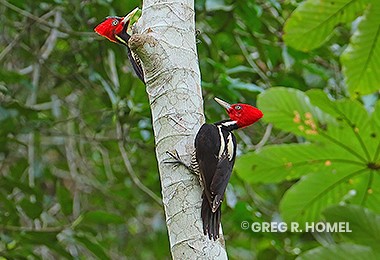Rancho Primavera
Birds to Watch: 330
Location: Puerto Vallarta » Jalisco
GPS: 20° 19′ 5.412” N / 105° 18′ 58.752” W
A Private Rancho & Wildlife Sanctuary located 45-minutes from downtown Puerto Vallarta
Well-forested, with many ecotones, flowery Rancho Primavera is now recognized as a keystone wildlife sanctuary in Cabo Corrientes—home to many exciting West Mexican specialties and endemics.
To date at least 330 species have been recorded by visiting birders. It is famous as the best place in Mexico to see and not just hear the snazzy, colorful Rosy Thrush-Tanager and the best regional place to glass a constellation of exciting birds, ranging from the otherworldly Bare-throated Tiger-Heron, to the mysterious, endemic, Sinaloa Martin, and a lineup of more commonly encountered birds ranging from Yellow Grosbeak, to Black-throated Magpie-Jay and Black-vented Oriole, etc.
It is famous as the best place in Mexico to see and not just hear the snazzy, colorful Rosy Thrush-Tanager and the best regional place to glass a constellation of exciting birds, ranging from the otherworldly Bare-throated Tiger-Heron, to the mysterious, endemic, Sinaloa Martin, and a lineup of more commonly encountered birds ranging from Yellow Grosbeak, to Black-throated Magpie-Jay and Black-vented Oriole, etc.
Tour Description
Located near the serene mountain hamlet of El Tuito, Cabo Corrientes (Currents Cape), Rancho Primavera was established in 1999 by the late Pat Morrow and her daughter Bonnie Jauregui. The ranch house is located at the refreshing elevation of 600 m / 1965’.
With its intact habitats, perennial ponds, and inspiring vistas, Rancho Primavera is emerging as one of West Central Mexico’s premiere birding destinations, and is easily accessible by road from Puerto Vallarta. The star bird is the colorful and skulky Rosy Thrush-Tanager, which is perhaps most easily encountered here than anywhere else in Mexico!
Location & Full Tour Description
– State of the Republic: Jalisco
– Location: 3 Km northwest of El Tuito
– Popularity of this tour: Very popular but uncrowded; you may be the only birding group at the Rancho during your visit and even if you’re not, its 200 acre / 81 hectare expanse means that there is plenty of space to enjoy nature to the fullest here.
– Address: Camino a Chacala Km 3, Cabo Corrientes, El Tuito 48400, Mexico
– Short description: Located near the serene mountain hamlet of El Tuito, Cabo Corrientes (Currents Cape), Rancho Primavera was established in 1999 by the late Pat Morrow and her daughter Bonnie Jauregui. The ranch house is located at the refreshing elevation of 600 m / 1965’.
With its intact habitats, perennial ponds, and inspiring vistas, Rancho Primavera is emerging as one of West Central Mexico’s premiere birding destinations, and is easily accessible by road from Puerto Vallarta. The star bird is the colorful and skulky Rosy Thrush-Tanager, which is perhaps most easily encountered here than anywhere else in Mexico!
– Itinerary: See specific details by clicking the itinerary tab
– List of popular birds, with endemics highlighted in bold print: See full eBird list by clicking the bird list tab
– Gallery: See Site Gallery by clicking this tour’s gallery tab
– Frequently Asked Questions or Recommendations to make your Visit as Enjoyable as Possible: Click on this tour’s FAQ button for specifics
Location & Full Tour Description:
Located near the serene mountain hamlet of El Tuito, Cabo Corrientes (Currents Cape), Rancho Primavera, with its intact habitats, perennial ponds, and inspiring vistas, is emerging as one of West Central Mexico’s premiere birding destinations, and is easily accessible by road from Puerto Vallarta.
Although most birders visit during the so-called “dry season,” running from November-March—a time when resident neotropical birds and wintering species from the US, Canada and Alaska occur together—birding is excellent here year round. In April and May, the hottest, driest months, the namesake Primavera Trees on the Rancho bloom in a riot of yellow colors while resident birds start singing and nesting. During the humid months of June through October, the so-called “wet season,” warm temperatures with often dramatic mid to-late-afternoon monsoonal thunderstorms prevail, and the whole area is impressively verdant and green.
No matter the timing of their arrival at Rancho Primavera, visiting birders will discover an outstanding array of endemic, indigenous and migratory song and aquatic birds—punctuated by a resident population of colorful and skulky Rosy Thrush-Tanagers, which are perhaps most easily encountered here than anywhere else in Mexico—and one or a few migratory, endemic, Sinaloa Martins, which, for a few weeks in March and April, regularly come to bathe at one of Rancho Primavera’s tranquil ponds each day (usually during the mid-morning and / or late-afternoon hours), on their migratory passage.
A quote from Greg R. Homel, who has been guiding visiting birders to Rancho Primavera for over a decade and has served as Keynote Speaker at the Vallarta Bird Festival five consecutive times, says it all about this remarkable Vallarta birding hotspot: “Rancho Primavera’s ever-growing bird list reads like a who’s who of Jalisco’s impressive lineup of colorful and endemic dream birds!”
Along those lines, during your half-day visit to Rancho Primavera, we’ll seek out its most exciting bird specialties at an array of easily accessible on site birding destinations—starting with the ranch house’s impressive feeder system—where a diverse lineup of fruit, seed and nectar feeders are present and stocked daily to attract Golden-cheeked Woodpecker, San Blas and Black-throated Magpie- jays, Yellow Grosbeak, Yellow-winged Cacique, Streak-backed and Black-vented orioles, Grayish Saltator, Stripe-headed Sparrow and others for remarkably close views and excellent photographic opportunities.
As if these were not enough of a draw, nectar feeders here regularly attract stunningly beautiful Violet-crowned, Broad-billed and Ruby-throated hummingbirds, in season, in addition to Plain-capped Starthroat, while flowery gardens and adjacent natural habitats provide excellent opportunities to see less commonly encountered hummingbirds, including the endemic Golden-crowned Emerald, wintering Calliope and resident Berylline hummingbirds, etc. Even the limited range, endemic, Mexican Woodnymph has been sighted by a few lucky birders on the Rancho.
After our first exhilarating stop at Rancho Primavera’s feeders, it’s onward toward the best territory where—with the seasoned assistance of Alex or Greg—birders may not just hear but can regularly see Rosy Thrush-Tanager, the keystone specialty of the Rancho!
Several ponds in the area also provide excellent opportunities to view Least Grebe, and the Vallarta region’s most reliably sighted Bare-throated Tiger-Herons. Green and Ringed kingfishers in addition to more commonly encountered waterfowl, shorebirds and long-legged wading birds round out the potentialities at any of five ponds on the Rancho.
With its friendly proprietors, close proximity to Puerto Vallarta, regularly stocked bird feeders, nearby food services (in El Tuito or Hacienda El Divisadero; and on site for guests of the Rancho itself), and the fact that it functions as a de-facto (and actual) wildlife sanctuary in the interior of Selva El Tuito, Rancho Primavera has earned its rightful place as a requisite stop on any birder’s dream list of can’t miss destinations they should plan on reaching during their stay in the Vallarta region goes a long way toward explaining why local and international birders from far and wide dream of birding Pat and Bonnie’s amazing rancho!
After your journey to lovely Rancho Primavera, you’ll be among the lucky visitors who know from personal experience why birders regularly return to this Jalisco birding hotspot year after year!
As a special note: Visiting birders have the fortuitous option to lodge on site here—instead of in a hotel miles from nature. Rancho Primavera offers “hotel-style rooms” in the ranch house itself, or for the ultimate in privacy surrounded by nature, they have three beautiful rental homes in the vicinity of their largest pond.
Please inquire with us if you are interested in lodging at beautiful Rancho Primavera. We have known the owners for over a decade and developed a very good relationship with them… so we can easily arrange for your stay here, with or without professional birding guide, if desired.
- Private Pickup
6:30-7.00 a.m.Private pickup at your hotel or an appointed nearby location, followed by participant introductions and a description of your tour’s logistics, replete with a map so you can get your bearings. - Driving between Vallarta and Today’s Birding in Mexico Hotspot—Rancho Primavera
7:00-8:00 a.m.After your private pickup, we will follow coastal Highway #200 south from Vallarta, which leads through a beautiful array of still largely intact habitats—beginning with deciduous Sinaloan Thorn Forest in the coastal lowlands where the highway borders the eastern tropical Pacific Ocean, then passes by a small chain of islands — Los Arcos National Park and Marine Reserve — where Brown Pelican, Magnificent Frigatebird, Blue-footed and Brown boobies, and Gray-breasted Martins may easily be seen, to reach Boca Tomatlan, located at the mouth of the Rio Los Horcones, and gateway to serene Yelapa, which is accessible by water taxi.From Boca Tomatlan, the highway turns inland, grading through montane tropical forest and encinal (pine-oak woodland) as we ascend a dramatic barranca (canyon) carved by the Rio Los Horcones — which is one of the only unobstructed, naturally flowing rivers remaining locally—to reach the small community of Las Juntas y Los Veranos and the Vallarta Botanic Garden a few kilometers beyond.Sometimes, while making this early morning drive, we can safely pull aside at a strategic pullout to observe a haze of White-collared Swifts swirling above the highway, as our transit coincides their activities as they leave their roost site deep in the canyon of the Río Los Horcones, early each morning.Military Macaws and Lilac-crowned Parrots are also frequent overhead while driving this route, so keep an eye out for their silhouettes in the sky as we ascend the grade.Beyond the Vallarta Botanic Garden, the highway levels out a bit and sinuously meanders through a habitat dominated by pine-oak woodland (encinal), home to nesting Military Macaws. In season we occasionally stop at one of their most active natural nesting and roosting sites on our way back to Vallarta, to try to sight them.Upon reaching El Tuito, we enter a placid agrarian valley at an altitude of 600 m / 1900’ above sea level, surrounded by mountains covered in dry pines-oak woodland (encinal).Rancho Primavera is accessible 3 kilometers northwest of El Tuito, via paved Camino Chacala. - Arrival at Today’s Birding in Mexico Hotspot
8:008:00 a.m. (timing is approximate and may vary due to traffic and weather conditions)After leaving the main Pan American Highway (#200) then passing through the outskirts of El Tuito, Camino Chacala will give you your first glance at Rancho Primavera’s impressive expanse, which is always impressive! To access our first stop— the ranch house feeders — we will turn off of paved Camino Chacala, onto an “intentionally inconspicuously marked dirt road” while fording a small stream where a Green Kingfisher is often seen.As mentioned in the introduction to this site, Rancho Primavera’s diverse lineup of fruit, seed and nectar feeders are stocked daily to attract Golden-cheeked Woodpecker, San Blas and Black-throated Magpie- jays, Yellow Grosbeak, Yellow-winged Cacique, Streak-backed and Black-vented orioles, Grayish Saltator, Stripe-headed Sparrow and others for remarkably close views and excellent photographic opportunities. - Breakfast Snacks
8:00-9:15 a.m.Upon arrival, while watching the interesting, sometimes comical morning bird antics going on at the Rancho’s ample seed, tortilla, fruit and nectar feeders, we too will boost our energy by enjoying some complimentary light breakfast snacks —“continental breakfast” if you would like — usually consisting of yogurt, fruit, juices, granola bars and other nutritious options. Cold, bottled fresh water and a selection of soft drinks—including diet options—are also readily available throughout the tour. We apologize if your preferred flavor is not available.There are no public facilities at Rancho Primavera, though the owners often provide this service as a courtesy to Birding in Mexico guests.Comfort stops are offered at select restaurants in nearby El Tuito a few kilometers away, and we will take advantage of them after we complete our birding outing at Rancho Primavera.If you are not comfortable with answering the call of nature outdoors, please consider moderating your intake of diuretics like coffee and tea ahead of our excursion. - Rosy Thrush-Tanager Adventure
9:15 – 10:15 a.m.Following our first exciting stop at Rancho Primavera’s feeders, we’ll take a short walk to a reliable location where Greg Homel and Alex Martinez have been able to see (not just hear) Rancho Primavera’s most famous avian resident — the colorful Rosy Thrush-Tanager —and to show our valued clients these birds through the use of ethical voice playback!Along the way to reach the Rosy Thrush-Tanager territory, we will pass a small pond where Least Grebes are regularly seen, along with the possibility of glassing the exotic-lookingBare-throated Tiger-Heron, etc.Surrounding encinal habitat here also supports an exciting array of migratory and resident flycatchers, warblers, vireos, buntings and other exciting birds. - Birding Casa Carpintero Pond
10:30 am – 12:00 p.m.After seeking out the snazzy Rosy Thrush-Tanagers we will, depending on your physical ability and desire, walk or drive one kilometer across the rancho — birding in route — to a tranquil and bird-rich wetland surrounding Rancho Primavera’s largest pond to observe myriad aquatic birds in comfort while seated on one of the ranch’s easy chairs that have been placed on a shaded dock at the south side of the pond, which is beautifully adorned by flowery vines hanging from a latticed trellis above you.Commonly encountered aquatic birds of note here in season include Black-bellied Whistling-Duck, Blue-winged Teal; Least and Pied-billed grebes; Neotropic Cormorant; Sora and American Coot; Black-necked Stilt, Northern Jacana and Spotted Sandpiper; Wood Stork (roosting each afternoon in a large pond on the north side of the pond); and a variety of herons, including Bare-throated Tiger-Heron, Green and Great Blue herons; Great, Snowy, Little Blue and Cattle egrets, Black-crowned and Yellow-crowned night-herons; White and White-faced ibis; Osprey; and three kingfisher varieties—Green, Ringed and Belted, etc. Other notable birds frequenting two ponds here and adjacent cabins—replete with flowery gardens—include one or a few migratory, endemic, Sinaloa Martins, which, for a few weeks in March and April, regularly come to bathe at one of Rancho Primavera’s tranquil ponds each day (usually during the mid-morning and / or late-afternoon hours), on their migratory passage. - Lunch and Extra Time:
12:00 – 2:00 pmWe will have a bit of extra time to use restaurant facilities or order from the menu. - Repatriation to your Hotel, Pickup Point or Home:
2:00 – 3:00 p.m.Each participant will be cordially returned to their starting point, with pleasure, and it is our sincere hope that you’ll return very pleased and richer for your Birding in Mexico experience.
Bird Watch List
** The number of birds per trip may change
List of popular birds, with endemics highlighted in bold print:
Black-bellied Whistling-Duck; West Mexican Chachalaca; Least Grebe; Groove-billed Ani and Squirrel Cuckoo; Common Pauraque; Plain-capped Starthroat, Broad-billed, Berylline, Cinnamon and Violet-crowned hummingbirds; Northern Jacana; Wood Stork; Bare-throated Tiger-Heron; Gray Hawk; Colima and Ferruginous pygmy-owls, Mottled Owl; Citreoline & Elegant trogons; Russet-crowned Motmot; Ringed and Green kingfishers; Golden-cheeked, Pale-billed and Lineated woodpeckers; Collared Forest-Falcon; Lilac-crowned Parrot, Orange-fronted Parakeet and Military Macaw; Ivory-billed Woodcreeper; Pacific-slope and Nutting’s flycatchers; Tropical and Thick-billed kingbirds; Golden, Black-capped and Bell’s vireos; Black-throated and White-throated magpie-jays; San Blas Jay; Sinaloa Martin; Happy and Sinaloa wrens; Orange-billed Nightingale thrush and Rufous-backed Robin; Rosy Thrush-Tanager; Stripe-headed Sparrow; Yellow-winged Cacique, Black-vented and Streak-backed orioles; and Summer Tanager, etc.
Please click on the following link to obtain a free, up to date, printable eBird List for Rancho Primavera: https://ebird.org/printableList?regionCode=L1437214&yr=all&m=
Recommended footwear for today’s excursion?
All-terrain shoes with ankle support are recommended; tennis shoes are also acceptable if you do not have high-top all terrain footwear.
What kind of Clothes should I Wear?
Lightweight clothing displaying neutral or earth tone colors (no bright colors or whites please, as they may alert often shy birds—such as the skulky Rosy Thrush-Tanager—to our presence from afar, preventing our close approach). We also recommended you don a hat or cap with a visor or brim (again, no bright colors or whites), to avoid glare and sunburn in the tropical climate we will be operating within.
Weather here at 600 m / 2000’ is usually very pleasant with mild temperatures. However, this is unpredictable. At any time of year Rancho Primavera’s weather can turn surprisingly cold, foggy or rainy, and quickly, so please carry a light duty windbreaker and a fleece to provide comfort during a sudden downpour, or warmth during the sometimes chilly early morning hours, respectively.
Sun Protection?
YES. We recommended using sun screen with a minimum sun protection factor of 16 (preferably 30 SPF or higher) on your face and other exposed skin to avoiding sunburns, especially in coastal, marine or high altitude environments.
Insect Repellent?
YES. During the dry season (November-May) biting insects are usually not very bothersome in Cabo Corrientes region generally, and Rancho Primavera specifically, but there are exceptions—especially where chiggers are concerned (as livestock is present on the Rancho), and you may not even realize you’ve been bitten until 12-24 hours after exposure; thereafter it’s too late and the itching can be formidable.
To be sure to avoid being bitten by chiggers, mosquitos or black flies, we recommended that you carry repellent with DEET as its active ingredient wherever you go, applying it liberally on an impromptu basis for mosquitos and black flies, while spraying your pant cuffs and socks for chiggers before every outing, regardless of the season.
You’ll be glad you did, especially during the wet season (June-October)!
We recommend a repellent that is sprayable via a non-aerosol propellent, also, since the pump style repellents may leak inside your daypack, potentially ruining your food, camera gear, or other often expensive equipment. Roll-on style repellents do not efficiently cover your skin’s surface, nor your pant cuffs or socks, so you are discouraged from using them in favor of a propelled spray.
Bring your Camera Gear
If you are an avid bird and / or wildlife photographer, Birding in Mexico offers select Bird Photography Expeditions with Greg R. Homel throughout Mexico, and the world, for that matter.
*Please inquire if you are interested in learning more about our bird and wildlife photography-oriented expeditions.
Our day trips—unless specified as bird photography-centric—are focused on birding specifically, and photography as an exciting sidebar. All tour participants are, of course, welcome to bring their cameras to practice this enjoyable pastime on all of our excursions.
Recommended equipment should include digital cameras with telephoto lenses equal to the equivalent of at least 400 mm for your bird photography efforts to be worthwhile in the first place.
Please don’t forget to bring extra batteries and memory cards specific to your camera brand.
Lens tissue should also be considered requisite to keep your lenses clean or to wipe incidental water or sea spray off of their (and your binoculars’) objective elements, as environmental conditions are unpredictable in the often wild regions we will be visiting.
What is this Expedition’s Level of Physical Difficulty?
Visitors to Rancho Primavera will generally encounter easy to moderate foot paths (some with ruts, rocky stretches or muddy conditions, depending on recent weather), with most of our walks rated as easy.
There is little or no altitudinal gain on the paths we will be exploring during our visit to Rancho Primavera, so it is suitable for most physical abilities.
The Rancho is not, however, wheelchair accessible, except perhaps in the vicinity of the ranch house’s feeders, though no ramps have been constructed.
If possible, we tend to adjust our walking pace to match the physical capabilities of each group.
*If you have specific concerns, please don’t hesitate to contact us in advance of your trip and we will do our best to provide you with accurate information, while advising you whether or not you would gain commensurately from the excursion you are contemplating.
What is Included on my Tour?
• All Birding in Mexico excursions include one or more specialized, Government-certified (for Mexican Citizens only), bilingual guide
• Your guide(s) will carry their own private binoculars at all times during the tour, and where productive, a high quality spotting scope
• Complimentary checklists will be handed out at your pickup pont and excellent regional field guides authored by Greg R. Homel will be offered for sale
• Breakfast-snacks are included
• Throughout the tour, complimentary snacks, fruit, purified water, and soft drinks are provided, with pleasure
• Private ground transportation with pickup and drop-off is also included
• For your safety and wellbeing a First aid kit is carried on all tours
Map
Check Availability for Rancho Primavera
We are experts in bird watching. BirdinginMexico.com offers tailor-made tours and expeditions through specific areas for birders. We have tours in Puerto Vallarta, Banderas Bay, San Blas Nayarit, El Tuito Jalisco, Marietas Islands and many more areas. The tropical forests and estuaries of this region allow the sighting of endemic birds. If you are fond of photography or you like bird watching, you will like to venture together with Greg Homel and Alejandro Martinez, experts specialized in ornithology and naturist adventure. Bird watching with specialists throughout Mexico.



